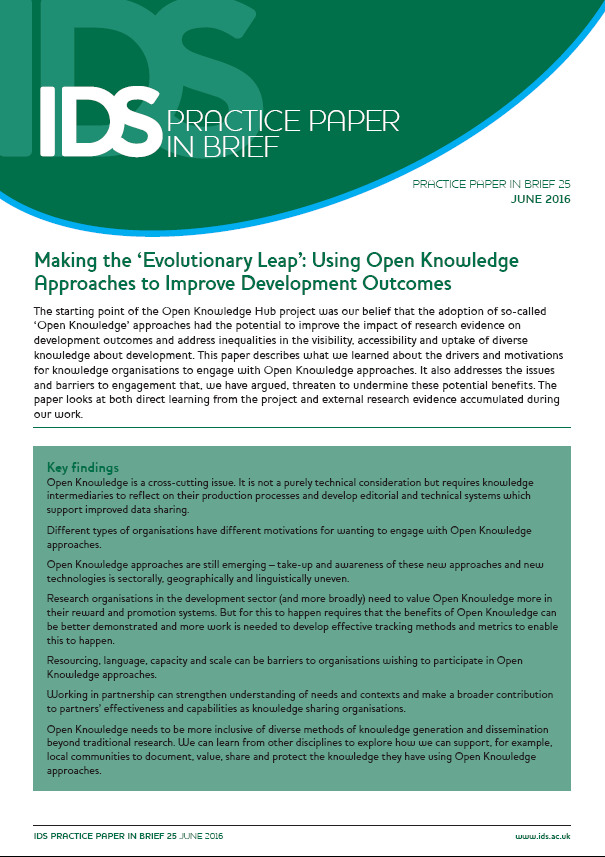Making the ‘Evolutionary Leap’: Using Open Knowledge Approaches to Improve Development Outcomes
The starting point of the Open Knowledge Hub project was our belief that the adoption of so-called ‘Open Knowledge’ approaches had the potential to improve the impact of research evidence on development outcomes and address inequalities in the visibility, accessibility and uptake of diverse knowledge about development.



